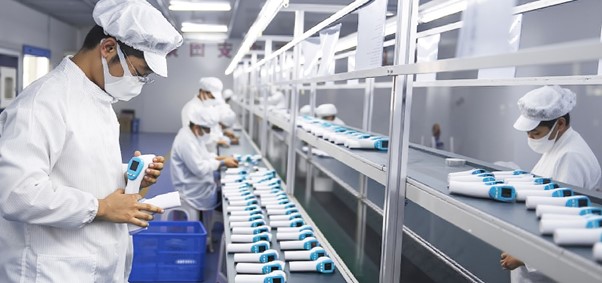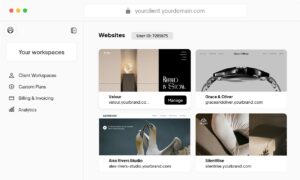Buying thermometers through regular retail channels can drain your budget fast. Every time a product changes hands from manufacturer to distributor to retailer someone adds their cut to the price. You end up paying for everyone’s profit margin, not just the actual product.
Why Going Direct to the Factory Works
I’ve seen businesses cut their thermometer costs in half by working straight with a thermometer factory. Think about it: when you buy retail, you’re paying the manufacturer, then the distributor, then the wholesaler, then the store. Each one wants their piece of the pie.
Here’s what really happens with pricing. That $8 thermometer you see in stores? The factory probably sells it for $3 or $4. The rest is just markup from everyone who touched it along the way. When you go directly, you skip all those extra fees.
But it’s not just about saving money. Working directly with manufacturers means you can actually get what you want. Need a specific color? Want your logo on it? Different packaging? Most retailers can’t help you with that stuff, but factories can make it happen.
Don’t Just Look at the Cheapest Price
The biggest mistake people make is going with whoever quotes the lowest price. I’ve learned this the hard way—sometimes that super cheap quote comes from someone who doesn’t even make thermometers. They’re just middlemen pretending to be manufacturers.
Real manufacturers can show you their stuff. They have certificates, photos of their factory, and can put you in touch with other customers. They’ll charge you a small fee for samples (maybe $20-50) because they know their product is worth it. Free samples? Usually, a red flag.
Good suppliers also speak your language literally. If you can barely understand what they’re saying or their emails don’t make sense, how are you going to work together when problems come up?
Shipping Isn’t as Simple as You Think
Here’s something that catches a lot of first-time buyers off guard: shipping thermometers internationally gets complicated fast. If your thermometers have batteries, you’re dealing with hazardous materials rules. That means special packaging, extra paperwork, and higher shipping costs.
The timeline usually goes like this: samples take about a week to ten days, then actual production needs three to five weeks, and shipping takes anywhere from a week (expensive air freight) to six weeks (cheaper ocean freight). During busy seasons like Chinese New Year or Christmas, add another few weeks to everything.
My advice? Plan way ahead. If you need products for summer, start ordering in winter. Rush jobs cost extra—sometimes 30% more than normal pricing.
Make Sure You Get What You Ordered
Just because the sample looks perfect doesn’t mean your bulk order will match. I’ve seen too many people get burned by this. The sample comes in a nice box with perfect printing, then the actual order shows up in plain packaging with crooked logos.
The trick is to approve what they call a “golden sample” basically, the final version that your production should exactly match. Get this in writing. Then, if possible, have someone inspect the goods before they ship. Yeah, it costs a few hundred bucks, but it’s way cheaper than dealing with 10,000 defective thermometers.
Some buyers use third-party inspection services. They’re worth it if you’re ordering large quantities or working with a new supplier.
Watch Out for These Common Problems
After talking to dozens of businesses that buy directly from factories, the same issues keep coming up. Logo problems are huge colors that don’t match, ink that fades, or printing that’s just plain wrong. Always approve your artwork in advance and ask for a printed sample.
Timing gets tricky around holidays.Plan around these dates or you’ll be waiting.
Paperwork headaches happen more than you’d think. Missing certificates or wrong product descriptions can hold up your shipment at customs for weeks. Make sure your thermometer company knows what documentation you need for your country.
Building Relationships That Actually Matter
The best factory partnerships develop over time. When suppliers know you are serious about doing long-term business, they will treat you differently. You get better prices, faster turnaround times, and they’ll pick up the phone when you call.
I’ve found that manufacturers are more willing to work with you on custom designs, payment terms, and rush orders once they trust you. They suggest ways to improve your product or save money on materials.
The key is being professional and consistent. Just need to pay on time, communicate with them clearly, and don’t try to squeeze every last penny out of every deal. Treat them like partners, not just suppliers, and you’ll be amazed at what they’ll do for you.
The Bottom Line
Factory direct sourcing isn’t rocket science, but it does require some homework upfront. The payoff is worth it, though, with better prices, more control over your products, and direct relationships with the people actually making your thermometers. Just remember to do your research, plan ahead, and build relationships for the long haul rather than just chasing the cheapest price.





























